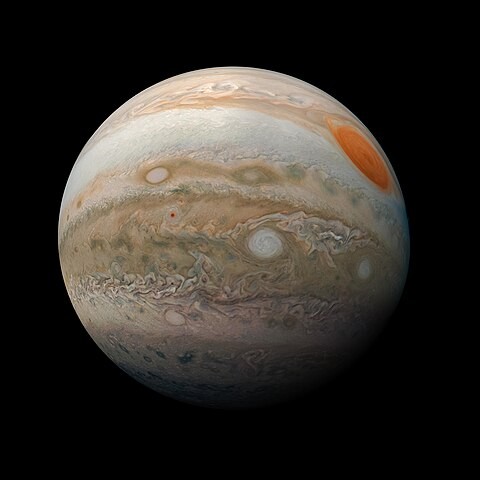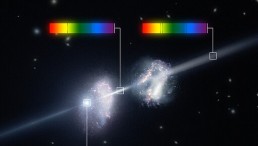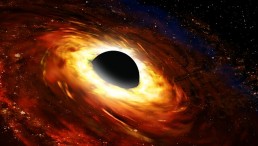
(Photo: Wikimedia Commons/NASA/JPL-Caltech/SwRI/MSSS/Kevin M. Gill)
NASA released new photos taken by its Juno mission. The snaps highlight Jupiter's colorful belts and more.
NASA's Juno Mission Releases New Photos of Jupiter
The mission released new photos that captured the swirling storms in Planet Jupiter aside from its colorful belts. It also featured the Great Red Spot. A closer examination revealed glimpses of its tiny moon, Amalthea.
Amalthea is shaped like a potato and lacks the mass to form a spherical, with a radius of only 52 miles (84 kilometers). Impact craters, hills, and valleys were among the surface features that NASA's Galileo satellite discovered in 2000. Amalthea takes 0.498 Earth days to complete a circuit around Jupiter, which is inside the orbit of Io, the innermost of the planet's four major moons.
Amalthea is the solar system's reddest object, and measurements show that it emits more heat than it takes from the Sun. This could result from the moon's core experiencing induced electric currents due to its orbit under Jupiter's intense magnetic field. Alternatively, Jupiter's gravity-induced tidal pressures may be the heat source.
When the first of these two photographs was acquired, the Juno spacecraft was around 165,000 miles (265,000 kilometers) above Jupiter's cloud tops and at a latitude of roughly 5 degrees north of the equator.
Gerald Eichstädt, a citizen scientist, created these photographs by editing raw data from the JunoCam instrument to improve image quality.
Hi there, mini-moon: Our #JunoMission recently caught a glimpse of the relatively tiny moon Amalthea above Jupiter's cloud tops. https://t.co/LURmWA41TK pic.twitter.com/UxlsKfI8sG
— NASA Solar System (@NASASolarSystem) May 13, 2024
ALSO READ: Ice Giants Neptune and Jupiter May Contain Frozen Methane That Explains Their Formation [Study]
About the Juno Mission
The main objective of the Juno mission is to comprehend Jupiter's formation and evolution. Jupiter protects secrets about the primary conditions and processes that most likely governed the formation of our solar system beneath its thick layer of clouds. Jupiter, the leading example of a vast planet, can also aid in our understanding of planetary systems that are being found around other stars.
"Jupiter is the Rosetta Stone of our solar system. Juno is going there as our emissary - to interpret what Jupiter has to say," said Scott Bolton, Juno's principal investigator at Southwest Research Institute in San Antonio.
All theories on the solar system's formation start with the collapse of a massive cloud of gas and dust known as a nebula, most of which contributed to the birth of the young Sun. Jupiter must have formed early, absorbing most of the material left over after our star originated, as it is primarily composed of hydrogen and helium, just like the Sun. It is unclear, though, how this came about.
Jupiter's enormous mass, in contrast to Earth's, allows it to retain its original composition, giving us a means of tracking the history of our solar system, much like a time capsule. Understanding Jupiter's genesis and history can aid in comprehending the development of the rest of the solar system, including how Earth came to be and how it developed as a refuge for life.
By mid-2021, Juno's primary mission was over, and it had revealed much about Jupiter's core structure, its atmosphere, which includes polar cyclones, deep atmosphere, and auroras, and the magnetosphere, the large area surrounding the planet that is affected by Jupiter's extraordinarily strong magnetic field.
Now that it is on an extended mission, NASA's most distant planetary orbiter, Juno, is exploring the entire Jovian system and building on its findings. This system contains three of Jupiter's four Galilean moons, Europa, Io, and Ganymede, named after the Italian astronomer Galileo Galilei, who was the first to identify the quartet of satellites in 1610. It also includes the dust in the planet's thin rings.
RELATED ARTICLE: Jupiter's Blue Spot Has Mysterious Jet That Appears Every 4 Years and Fluctuate Like Waves
Check out more news and information on Jupiter in Science Times.














